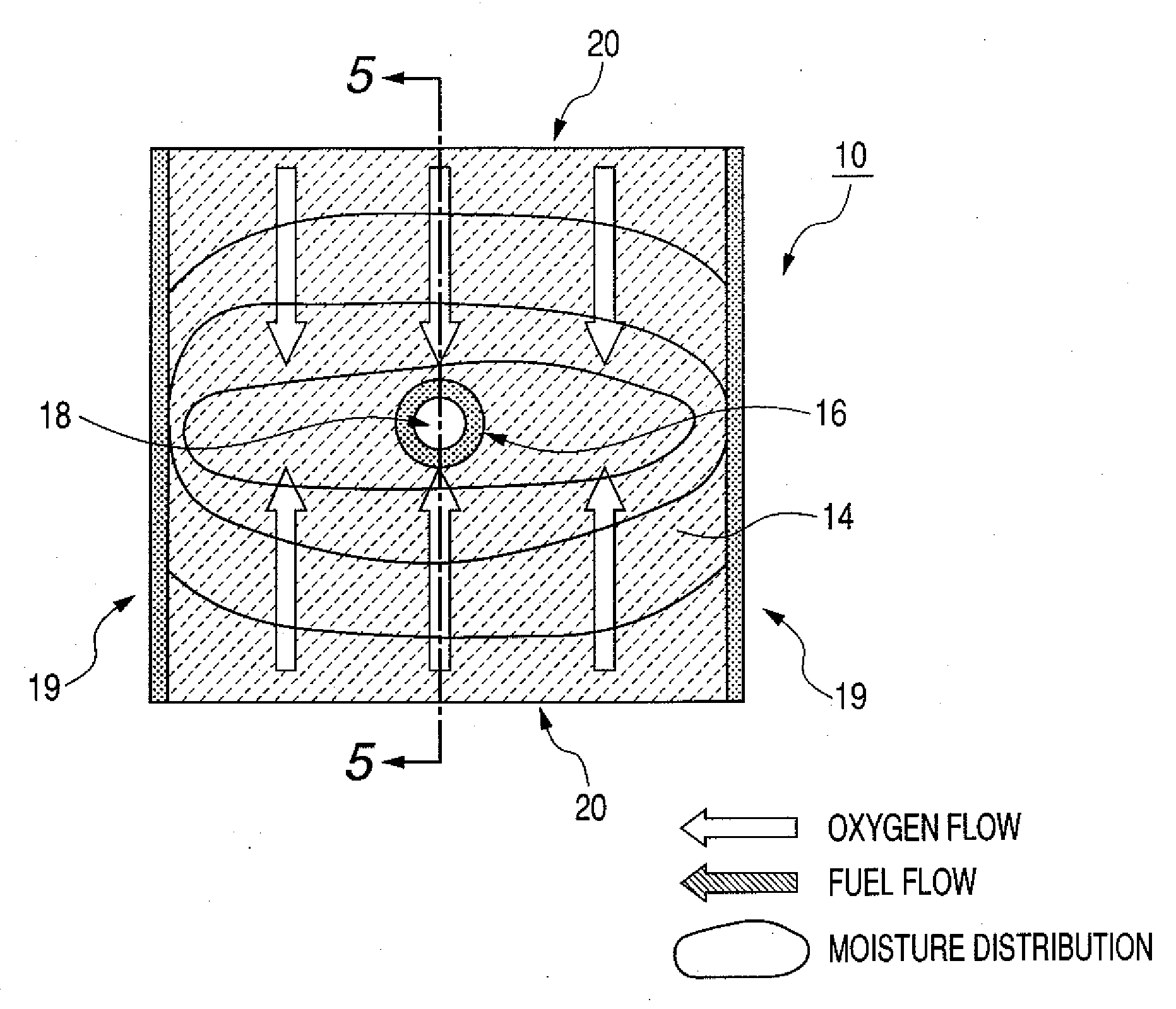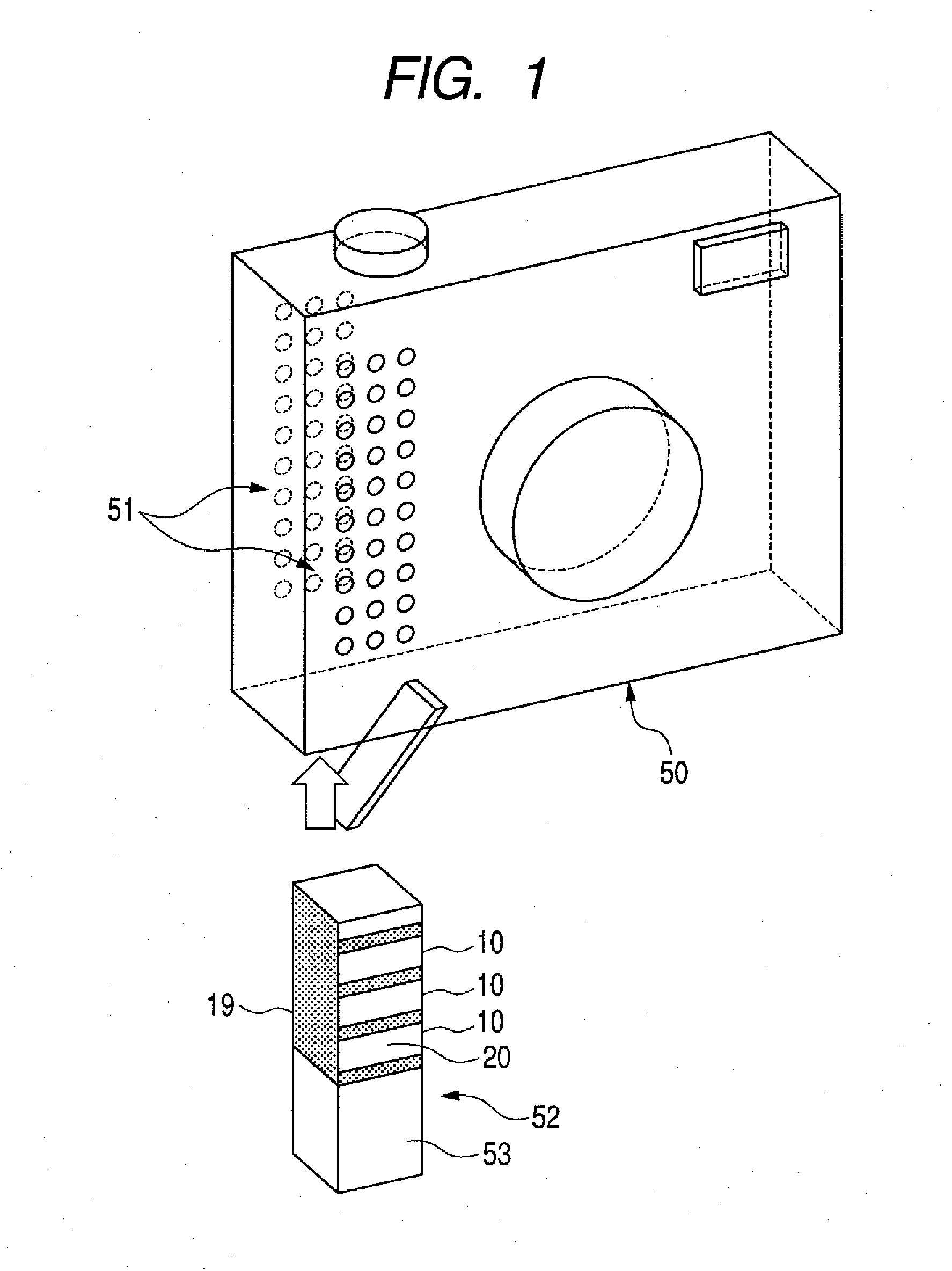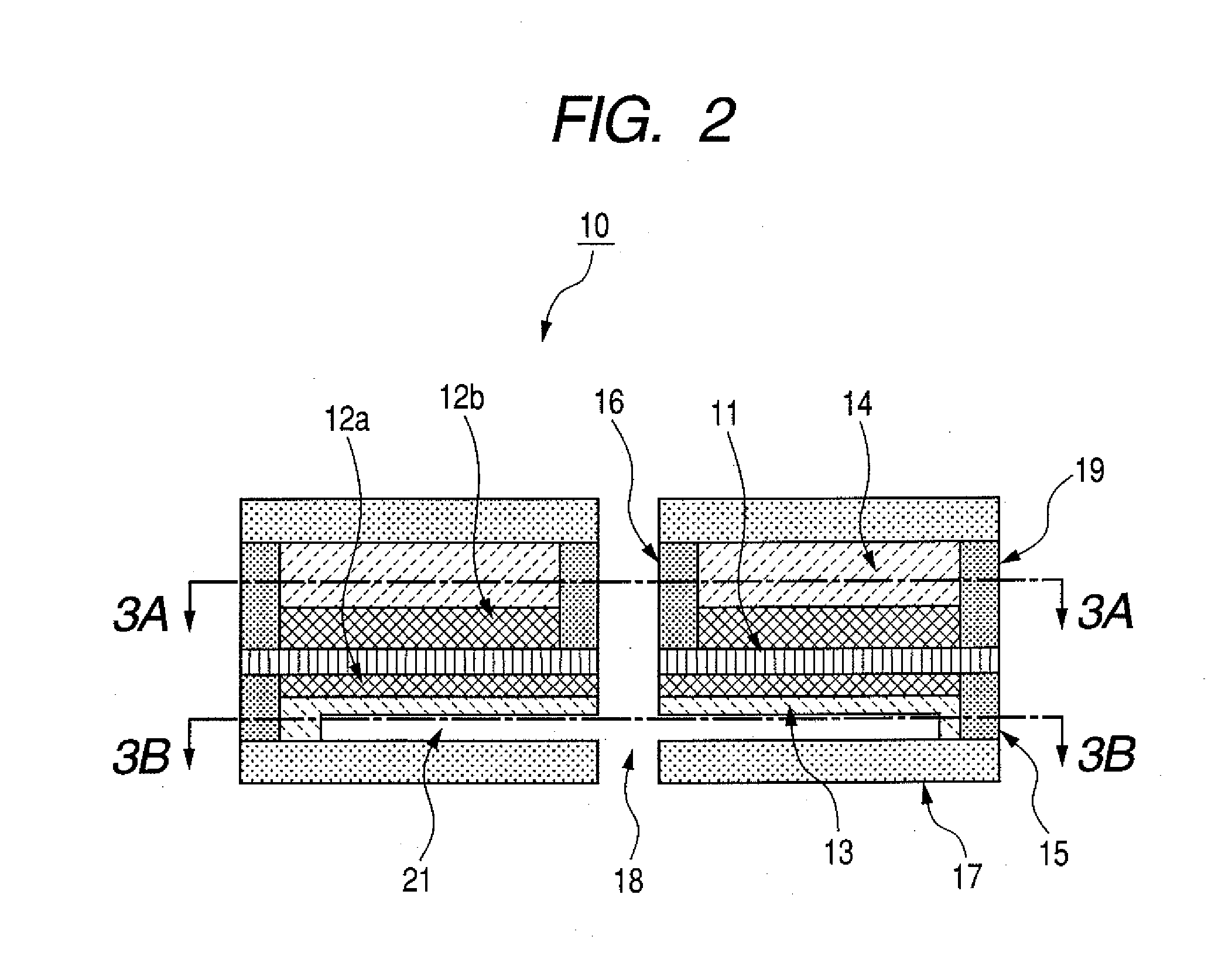Fuel cell unit
a fuel cell and unit technology, applied in the field of fuel cell units, can solve the problems of small electronic apparatus size, small size formation of electronic apparatus, and inability of fuel cell to adopt the function of the fuel cell unit optimum selection, etc., to achieve the effect of improving power generation performance and starting performan
- Summary
- Abstract
- Description
- Claims
- Application Information
AI Technical Summary
Benefits of technology
Problems solved by technology
Method used
Image
Examples
first embodiment
[0029]FIG. 1 is an explanatory view of a constitution of a small electronic apparatus to which a fuel cell according to a first embodiment of the present invention is incorporated; FIG. 2 is an explanatory vertical sectional view illustrating a structure of a fuel cell unit; and FIGS. 3A and 3B are explanatory horizontal sectional views of the fuel cell unit of FIG. 2. FIGS. 4A and 4B are explanatory views illustrating hydrogen gas flow and oxygen flow in the fuel cell unit; and FIG. 5 is an explanatory view illustrating the state of electric power generation using a polymer electrolyte membrane. FIGS. 3A and 4A are horizontal sectional view taken in the line 3A-3A of FIG. 2, and 3B and 4B are horizontal sectional view taken in the line 3B-3B of FIG. 2.
[0030]FIG. 1 is the explanatory view showing the constitution of the small electronic apparatus into which the fuel cell according to this embodiment is incorporated.
[0031]As shown in FIG. 1, the fuel cell 52 of this embodiment can be...
second embodiment
[0056]FIGS. 9A, 9B and 9C are sectional views of a fuel cell unit according to this embodiment. FIG. 9A is a sectional view taken in the same manner as in FIG. 2. FIGS. 9B and 9C are sectional views taken in the same manner as in FIGS. 3A and 3B.
[0057]As shown in FIGS. 9A, 9B and 9C, in this embodiment, the fuel cell unit has a single opening. In this embodiment, the region having a low fuel diffusion resistance is formed in the vicinity of a region which is in point symmetry in the fuel diffusion layer with respect to a region in the fuel diffusion layer existing in the same plane as the opening. Further, the longest segment that can exist in the region having a fuel diffusion resistance of B and that is parallel to the interface between the polymer electrode membrane and the catalyst layer and parallel to the opening is longer than the segment that is perpendicular to the opening and parallel to the interface.
[0058]When forming the groove 21 in the fuel flow field plate 13 as the ...
third embodiment
[0062]In this embodiment, each fuel flow field plate of the fuel cell unit stack has a fuel supply port for introducing fuel and fuel discharge ports for discharging fuel. As shown in FIGS. 10A, 10B and 10C, the fuel flow field plate 13 of this embodiment has a fuel supply port for discharging fuel from the fuel flow path 18 to the fuel flow field plate 13, and a fuel discharge port 54 for discharging fuel from the fuel flow field plate 13 to another fuel cell unit. As shown in FIGS. 10A, 10B and 10C, as in the first embodiment, water is likely to be generated in the region of the oxygen flow field plate 14 containing a symmetry point and parallel to the opening 20. In view of this, a region having a low diffusion coefficient is formed in the region of the fuel flow field plate 13 containing the symmetry point and parallel to the opening 20.
[0063]As shown in FIGS. 10A, 10B and 10C, it is desirable to form the fuel flow path 18 in the vicinity of one end of the region having a low di...
PUM
| Property | Measurement | Unit |
|---|---|---|
| thickness | aaaaa | aaaaa |
| thickness | aaaaa | aaaaa |
| porosity | aaaaa | aaaaa |
Abstract
Description
Claims
Application Information
 Login to View More
Login to View More - R&D
- Intellectual Property
- Life Sciences
- Materials
- Tech Scout
- Unparalleled Data Quality
- Higher Quality Content
- 60% Fewer Hallucinations
Browse by: Latest US Patents, China's latest patents, Technical Efficacy Thesaurus, Application Domain, Technology Topic, Popular Technical Reports.
© 2025 PatSnap. All rights reserved.Legal|Privacy policy|Modern Slavery Act Transparency Statement|Sitemap|About US| Contact US: help@patsnap.com



